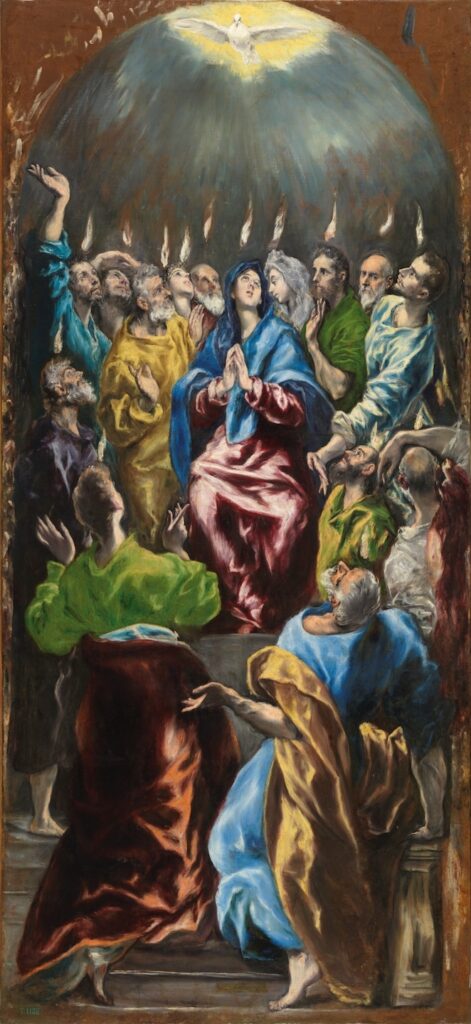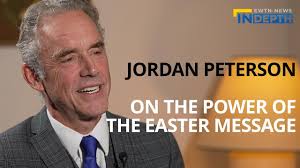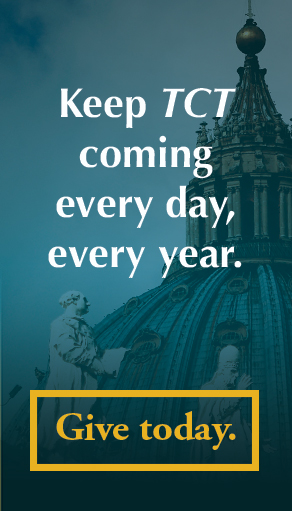As the Church ends the Easter season tomorrow and re-enters Ordinary Time, parishes in the United States again will have to explain to the faithful that the word “ordinary” in this context does not mean what it normally means: commonplace, nondescript, or unexceptional. Rather, the word “ordinary” is used here to designate the ordinal numerals by which the weeks of this liturgical season are named or counted. While this is a helpful clarification (“ordinary” comes from the Latin ordinalis or ordo, so, ordered or measured time), there’s more that needs to be said.
Ordinary time, which totals 33 or 34 Sundays, depending on when Easter falls, officially entered the Roman Catholic Church with the introduction of a new Church Calendar in 1970, in the aftermath of the Second Vatican Council. The Latin expression is tempus per annum, or time throughout the year, but English-language and other lectionaries carried this over into the vernacular as Ordinary Time.
It’s not entirely clear why those who drafted the new calendar adopted this designation. Insofar as they provided a rationale – namely, to designate a season in which no specific mystery of Christ is celebrated, but rather the mystery of Christ in its entirety – it raises more questions than it answers. The Norms from the Sacred Congregation of Rites simply affirm that “The thirty-four weeks of Ordinary Time will now constitute only one season.”
The new change had one possible advantage in that it helps tie together two seasons that are closely related and share the same liturgical color, green. Perhaps that is why the new season was designated as “one block with two phases.” But however well-intentioned the change may have been, the new phrase Ordinary Time had the unintended consequence of suggesting to the faithful that there is nothing special about the season, even perhaps that it represents a kind of break or “time-out” in the Liturgical Year.
For that reason, some have argued over the years for returning to the Church’s previous designations. It’s also why, almost immediately after its introduction, the Church found itself in the position of having to clear up a major linguistic confusion. Regrettably, the problem goes beyond mere semantics.
For one, marking this season of the Church’s liturgical year by reference to sequentially numbered Sundays seems to anchor it in the realm of chronological time, the mere succession of days, weeks, and months. Placing the Church’s calendar in the realm of Chronos obscures the reality that this season is pregnant with salvific meaning.
In an odd way, the name change seems to turn on its head the biblical teaching that Christ came “in the fullness of time [chronos] (Galatians 4:4)” to redeem or sanctify time, to imbue it with a higher meaning, not to be defined or be subsumed by it. The primary character of this season is qualitative rather than merely quantitative; thus, it is Kairos, the other Greek word for time, that best captures the higher-register aspect of this season.
Kairos time is purposeful or opportune time. It captures the reality that the liturgical calendar is punctuated not by the mere passing of weeks and months but by the major events within redemptive history. More specifically, the Church’s calendar revolves around God’s salvific plan, long in its unfolding, in the momentous events associated with the greatest story ever told: the mystery of Christ – his incarnation, passion, death, resurrection, and ascension.

As the Catechism states, “In the liturgical year the various aspects of the one Paschal mystery unfold.” (CCC 1171) This is the time when God acts decisively in history with profound consequences for sinful humanity. Jesus himself declares at the beginning of Mark’s Gospel: “The time [kairos] is fulfilled, and the kingdom of God is at hand; repent and believe the gospel.” (Mark 1:15)
To be sure, we human beings live in the regularity of chronological time with predictable rhythms, on which science, for example, absolutely depends. We ought to be grateful for that since this too shows God’s wise design. As the Book of Wisdom expresses it: “You have arranged all things by measure and number and weight.” (Wisdom 11:20) But we do not live exclusively within this immanent or temporal frame.
That would be to reduce human beings – who are both body and spirit – to the purely material, and to define ourselves by the constricting, reductive categories of philosophical materialism. The fact that not even materialists can live their lives exclusively in the kind of world their philosophy stipulates points to the fact that there is something more to our earthly sojourns, something that even the “metaverse” can’t hope to duplicate.
So, why would we want to lessen the faithful’s rich sense of the higher order of liturgical time by naming the longest season on the Church’s calendar with reference to the mere passing of chronological time?
Human beings have a built-in – hard-wired, as it were – orientation toward transcendence. The reason behind this, as the Book of Ecclesiastes poetically describes it, is that God “has put eternity into man’s heart” (Ecclesiastes 3:11); or, as the Catechism of the Catholic Church puts it, “Man is by nature and vocation a religious being.” (no. 44)
The flat, empty, purely quantitative universe modern materialism postulates – “a world without windows,” to use Peter Berger’s memorable phrase – are hard-wired as it were – predictably leads to a deep sense of claustrophobia and solipsism, which in turn induces a kind of cosmic boredom. The antidote to this is a sense of transcendence that recognizes that the cosmos is infused with a deep sacramentality.
“Earth’s crammed with heaven, and every common bush afire with God,” as the Victorian era English poet Elizabeth Barret Browning so beautifully expressed it. This is what makes our life on earth truly meaningful, indeed a great adventure. We live, then, not only on two planes – the vertical and the horizontal – but also in two time zones: Chronos and Kairos. To collapse the higher time into chronological time unwittingly contributes to the desacralization of the world, which could hardly have been the Church’s intention.
But there’s another problem with the use of the term Ordinary Time. The Church’s proper rhythm is to be in fasting and penitential preparation (Advent and Lent); in feasting and celebration (Christmas and Easter); or in mission, at work extending Christ’s redemptive work in the world while maintaining a posture of hopeful expectation for the Lord’s Second Coming. The simple numerical markings of the Sundays of Ordinary Time, therefore, not only obscure the fact that this season belongs to redemptive time – to Kairos, not Chronos – but it also fails to clearly point us toward the Church’s missionary calling.
The missionary significance of Pentecost is unmistakable. The infilling of the disciples with the Holy Spirit that defines that momentous event immediately prompted Peter, standing with the other disciples, to deliver a powerful sermon that led to the conversion of about three thousand souls, as recorded in Acts 2:41. This provided immediate confirmation of the promise Jesus made to his disciples before he ascended into heaven that they would “receive power when the Holy Spirit has come upon you.”
The Church had never settled on a universally accepted name for this season until 1474, with the first edition of the Roman Missal. Numbering the succeeding Sundays with reference to Pentecost goes as far back as the Frankish liturgy books of the eighth century. Prior to that, the Sundays that followed Pentecost seem to have been designated primarily in relation to the feast of specific saints (Peter and Paul), angels (St. Michael the Archangel), or major teachings (the Trinity). The Sundays were never designated through mere chronological numbering. So, something very important has been lost in the process.
The prior practice had the advantage – in principle, if not always in practice – of providing the Church with the occasion to remind the faithful to keep the Lord’s Great Commission ever in mind. The Church could rightly point out: “People of God, we are already at the tenth week marking the great outpouring of the Spirit at Pentecost, how are we doing in carrying out the Church’s mission of evangelizing the nations and sanctifying the world?”
That would be a powerful reminder, indeed, that this is the Season of Missionary Time.

















